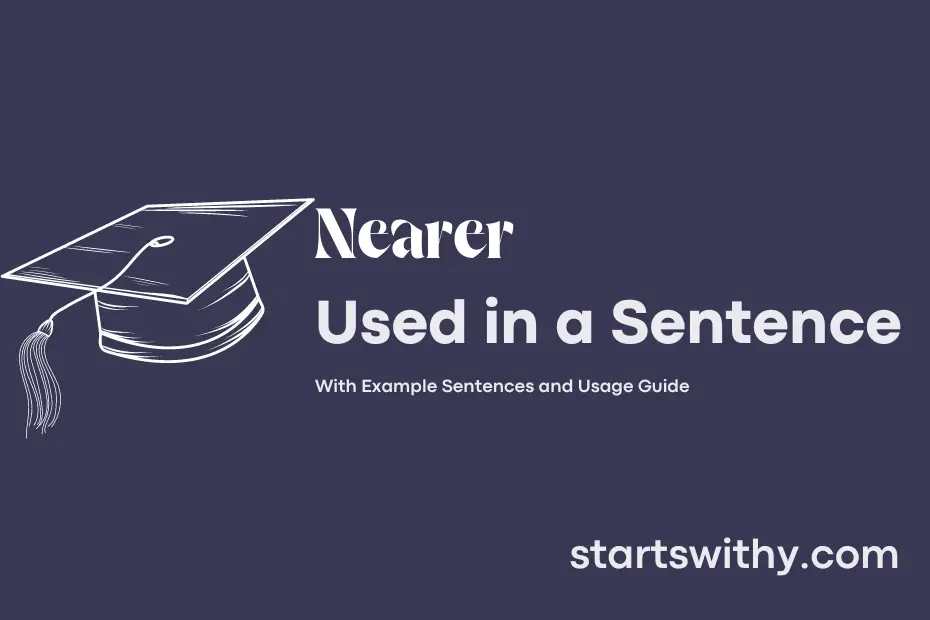Do you struggle with identifying when to use “nearer” in a sentence? “Nearer” is an adjective or adverb that indicates proximity or closeness in distance.
When used as an adjective, “nearer” describes something that is closer in distance, while as an adverb, it modifies a verb by showing that an action is closer in location or time.
7 Examples Of Nearer Used In a Sentence For Kids
- I see the bus stop nearer to our school.
- Let’s walk nearer to the playground.
- The ice cream shop is getting nearer to us.
- Can you point to the tree that is nearer to us?
- The colorful flowers are nearer to the gate.
- We are getting nearer to our classroom.
- Look, the birds are flying nearer to our window.
14 Sentences with Nearer Examples
- The library is located nearer to the academic block.
- The canteen is much nearer than the hostel.
- The exam hall is nearer to the parking lot.
- The ATM is nearer to the classroom building.
- The bookstore is conveniently nearer to the main gate.
- The sports center is nearer to the gym.
- The college bus stop is nearer to the faculty quarters.
- The cafeteria is nearer to the lecture hall.
- The photocopy shop is nearer to the administrative office.
- The music room is situated nearer to the art studio.
- The computer lab is nearer to the science block.
- The health center is nearer to the hostel.
- The college gate is nearer to the main road.
- The seminar hall is nearer to the college entrance.
How To Use Nearer in Sentences?
Nearer is used in a sentence to indicate proximity or closeness in physical distance. Here’s a guide for beginners to use nearer properly in a sentence:
-
Identify the context: Understand the situation where you want to express closeness or nearness.
-
Choose the appropriate placement: Nearer is an adjective that typically comes before a noun to describe its proximity. For example, “The store is nearer to my house than to yours.”
-
Use comparative forms: Nearer is often used in comparison to something else. For instance, “The beach is nearer to the hotel than the mountains.”
-
Avoid redundant usage: Since nearer already indicates closeness, try not to use it with other similar words like closer in the same sentence.
-
Check for subject-verb agreement: Ensure that the rest of the sentence agrees with the usage of nearer in terms of verb tenses and plural/singular forms.
-
Practice using it: To get comfortable with using nearer correctly, practice constructing sentences that highlight proximity in various contexts.
Remember, using nearer effectively can help convey location or distance in a clear and concise manner. With practice, beginners can easily incorporate nearer into their vocabulary to communicate proximity accurately.
Conclusion
In writing, using sentences with “nearer” can help provide a sense of proximity or closeness between objects, people, or points in time. By incorporating this word into your writing, you can effectively convey a feeling of nearness or advancement towards something. For example, “The store is getting nearer,” creates a visual image of the store coming closer. This simple word choice can make descriptions more vivid and engaging for readers.
Furthermore, sentences with “nearer” can also be utilized to indicate a progression of time or events. For instance, “The deadline is drawing nearer,” emphasizes the approaching time frame. This word can help build tension or anticipation in a narrative, making the writing more compelling and dynamic.Overall, incorporating sentences with “nearer” into your writing can enhance clarity, create vivid descriptions, and effectively convey the passage of time or progression towards a specific point.



